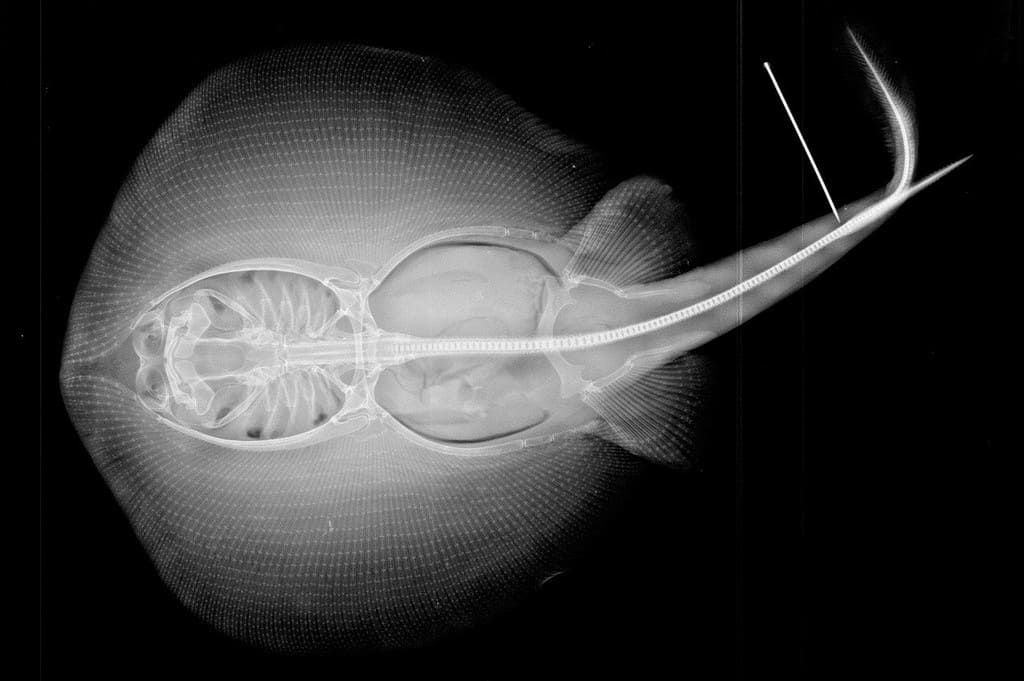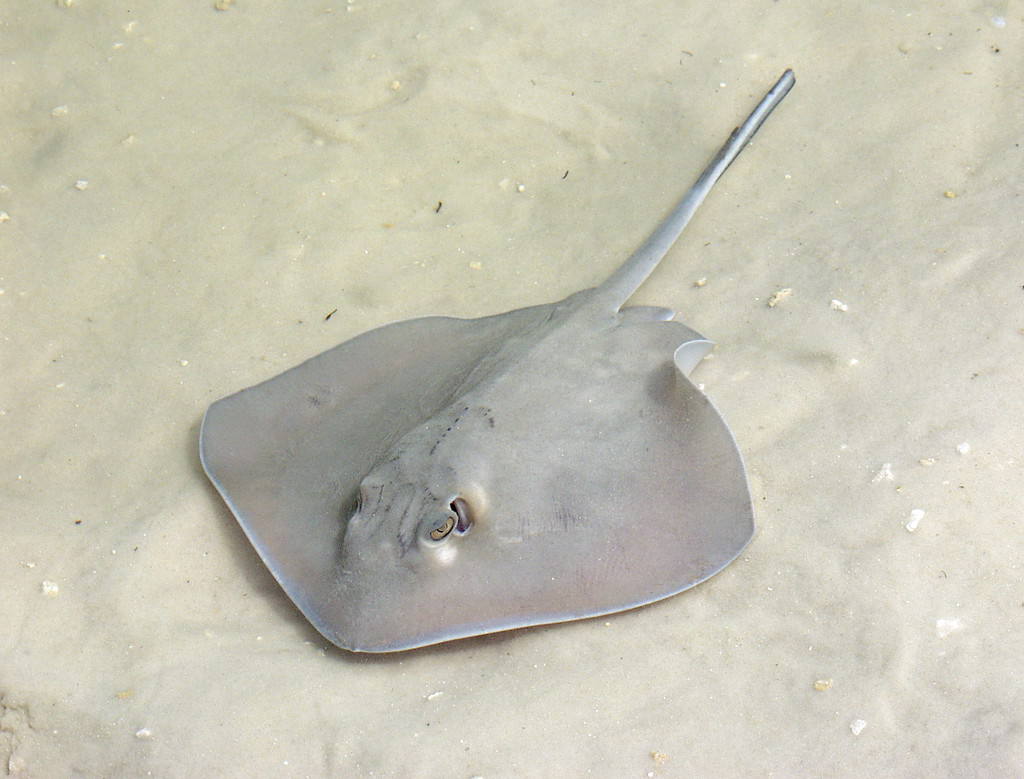I don’t know what I was expecting a stingray skeleton to look like but somehow, it wasn’t really this.

Stingrays, with their wide, flat bodies and long, slender tails, are a sight to behold in the oceanic world. They belong to a group of fish known as elasmobranchs, closely related to sharks and have a remarkable shape that is supported by an equally remarkable skeleton.
There are over 200 species of stingrays, each adapted to its unique habitat. Some, like the well-known manta rays, are colossal, gliding through open waters. Others prefer the sandy bottoms of shallower areas, camouflaging themselves perfectly against predators and prey. The diversity in their living spaces is as broad as their species, ranging from tropical temperatures to the colder waters.
Stingrays spend much of their time inactive, partially buried in sand. However, when they do move, it’s a display of grace and efficiency, using their pectoral fins to elegantly propel themselves through the water.
But their muscular system depends on an immensely elaborate skeletal system.
Stingray skeletons
Often overshadowed by their shark relatives, stingrays have fascinated both marine biologists and ocean lovers alike. One of the most intriguing aspects of these marine animals is their skeletal structure, significantly different from the bony skeletons of many other fish. Thanks to the wonders of modern technology, specifically x-ray imaging, we can now explore the intricate framework that supports these elegant swimmers.

The skeletal structure of stingrays is a marvel in the world of marine biology. Unlike many fish that possess bony skeletons, the stingray’s framework is primarily composed of cartilage, the same material that shapes our ears and noses. This cartilaginous structure plays a pivotal role in their survival and adaptation in aquatic environments.
So stingrays don’t really have too many bones — they have cartilage instead, much like sharks. That’s why, along with sharks, they are often called “cartilaginous fish.”
Cartilage over bones
Cartilage, lighter and more flexible than bone, offers stingrays numerous advantages. It allows them to glide effortlessly through water and bury themselves in sandy ocean beds with ease. This flexibility is particularly important because it enables the stingray to maneuver around obstacles and predators, providing a significant survival advantage. Moreover, cartilage is more resistant to pressure and damage, which is advantageous for an animal living in an environment where pressure can vary greatly.
The use of x-ray imaging in studying stingrays has led to several fascinating discoveries, revealing much about these enigmatic creatures. For instance, one notable discovery is the variation in skeletal structures among different species, reflecting their adaptation to diverse environments. For example, stingrays that burrow into the seabed have differently shaped pectoral fins compared to those that swim in open waters.
Of course, the stingray’s skeleton is uniquely adapted to its flat body shape. This adaptation is not just for streamlined swimming but also for a lifestyle close to the seabed. The wide, flat structure allows them to hide under the sand and ambush prey, or avoid predators. Their skeletal structure, particularly around the pectoral fins, is designed to stir up sand and uncover hidden prey like crustaceans and small fish. This method of hunting is facilitated by the flexibility and shape of their skeleton.
Cartilage has better regenerative properties compared to bone. In the wild, this means quicker healing from injuries, an advantage for survival. But it’s not good with cartilage.
Evolutionary significance
Stingrays evolved back in the Cretaceous, during the age of the dinosaurs. Their cartilaginous skeleton is considered a primitive feature in evolutionary terms. However, for stingrays, it has been retained and adapted over millions of years because it offers significant advantages for their specific ecological niche.
So what are the downsides of cartilage over bone?
Cartilage is softer and more flexible than bone, which means it provides less support. For stingrays, this limits their size and the amount of muscle they can support compared to bony fish. It’s one reason why stingrays, despite their wide span, are relatively flat and not bulky. While the flexibility of cartilage is beneficial for movement, it offers less strength compared to bone. This means that stingrays might not be able to withstand strong impacts or predatory attacks as effectively as some bony fish.
Unlike bones, which heal relatively well when fractured, cartilage has limited healing capabilities. This is because cartilage lacks a direct blood supply, making the healing process slower and less efficient.
Marine research
So in this simple imaging of the stingray’s intricate skeleteon lies a strikingly complex balance — one between bone and cartilage, old and new, each with their own advantages and disadvantages. Of course, this is all in addition to the adaptations to the stingrays’ particular lifestyle and environments.
The study of stingrays, particularly through non-invasive methods like x-ray imaging, is not just about scientific curiosity; it’s a step towards preserving the delicate balance of our oceans. As we learn more about these fascinating creatures, we grow closer to understanding the vast, interconnected world beneath the waves.
[This article is over 10 years old and has been republished from the ZME Science archive]


